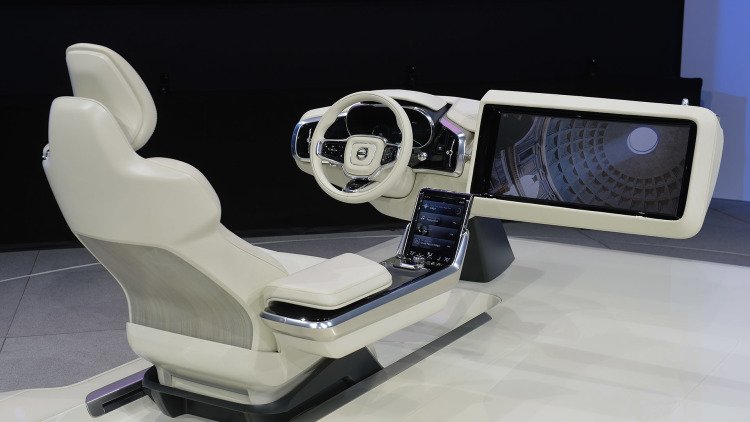Yes, the Concept 26 – named for the average commute time of the average American driver – is an "interior design concept," and as such, there's nothing to be said about things like the engine, transmission, or suspension. Instead, this study demonstrates "how luxury autonomous cars will integrate into daily life." That means plenty of stuff that Volvo thinks owners of autonomous cars will want in their vehicle.
"It's all about people. Our research clearly shows that some people will want to use their commuting time creatively when they have full autonomous drive available, while others will want to just sit back and relax, watch online media or listen to music," says Volvo Vice President of Interior Design Robin Page. "Autonomous drive will make all of this possible. This is what Concept 26 has captured by reimagining the entire car experience."
The basis of this concept interior are the tri-mode seats. While driver-controlled cars might get Eco, Normal, and Sport modes, the Concept 26's seats can be set in Drive, Create, or Relax mode. Drive is, rather obviously, what you'll use when you want to do some steering or stomp on some pedals. It's a proper driving position, compared to Create or Relax. The former telescopes the steering wheel in, slides the driver's seat back and pops out a handy little tray table, while the latter will slide the seat back and an ottoman will deploy. In the two driverless modes, the center console will slide back as well, keeping drivers in touch with the excellent Sensus infotainment system. For passengers, meanwhile, a rather sizable display will fold out of the dash.
The Concept 26 is proof that Volvo really is serious about this autonomous vehicle stuff. While some of the features appear fanciful and borderline unnecessary, it shows that the company is thinking not only about the technical hurdles of the autonomous car, but how to deliver a satisfying experience to those willing to adopt them.



Related News

